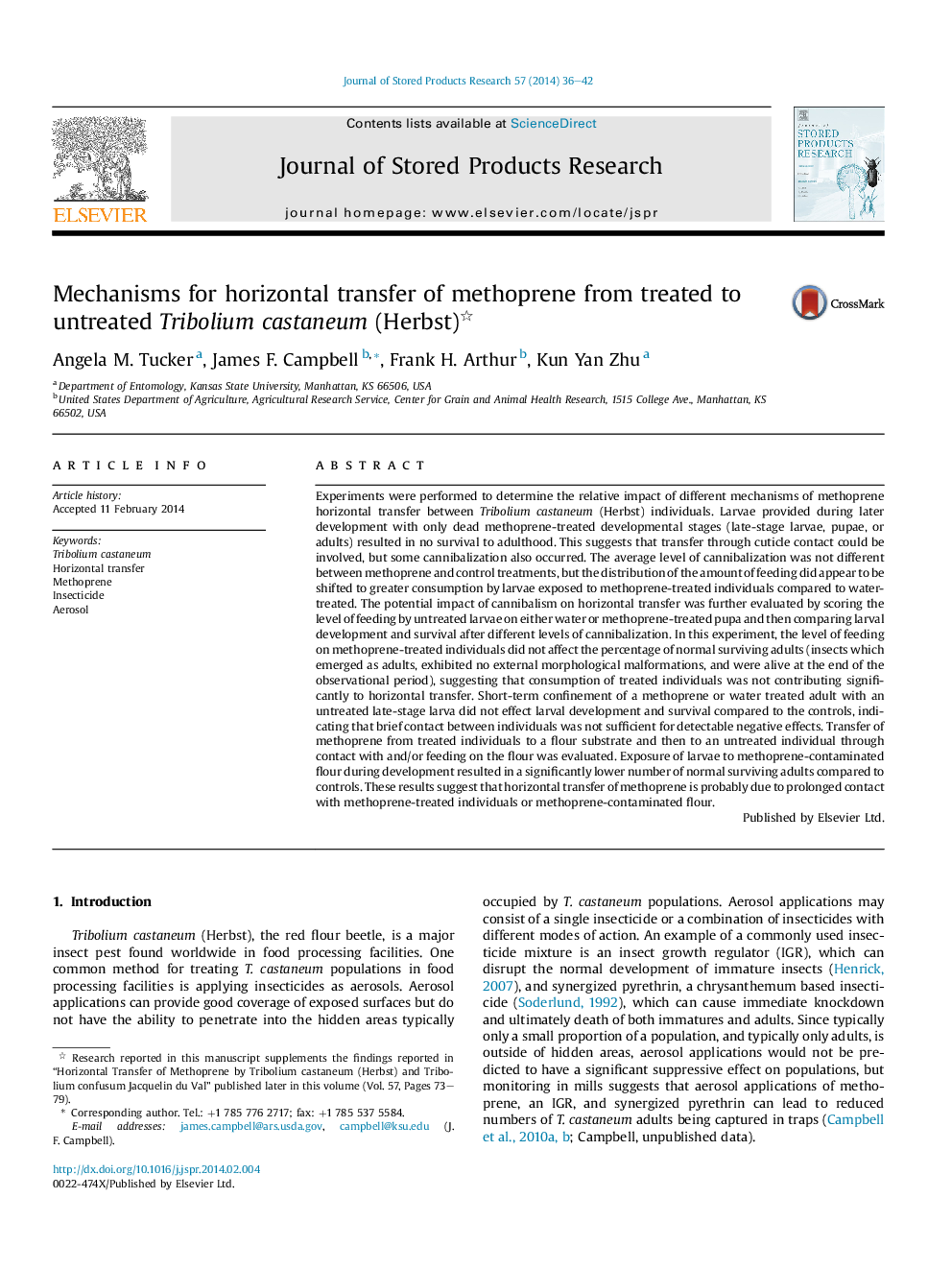| Article ID | Journal | Published Year | Pages | File Type |
|---|---|---|---|---|
| 6378507 | Journal of Stored Products Research | 2014 | 7 Pages |
Abstract
Experiments were performed to determine the relative impact of different mechanisms of methoprene horizontal transfer between Tribolium castaneum (Herbst) individuals. Larvae provided during later development with only dead methoprene-treated developmental stages (late-stage larvae, pupae, or adults) resulted in no survival to adulthood. This suggests that transfer through cuticle contact could be involved, but some cannibalization also occurred. The average level of cannibalization was not different between methoprene and control treatments, but the distribution of the amount of feeding did appear to be shifted to greater consumption by larvae exposed to methoprene-treated individuals compared to water-treated. The potential impact of cannibalism on horizontal transfer was further evaluated by scoring the level of feeding by untreated larvae on either water or methoprene-treated pupa and then comparing larval development and survival after different levels of cannibalization. In this experiment, the level of feeding on methoprene-treated individuals did not affect the percentage of normal surviving adults (insects which emerged as adults, exhibited no external morphological malformations, and were alive at the end of the observational period), suggesting that consumption of treated individuals was not contributing significantly to horizontal transfer. Short-term confinement of a methoprene or water treated adult with an untreated late-stage larva did not effect larval development and survival compared to the controls, indicating that brief contact between individuals was not sufficient for detectable negative effects. Transfer of methoprene from treated individuals to a flour substrate and then to an untreated individual through contact with and/or feeding on the flour was evaluated. Exposure of larvae to methoprene-contaminated flour during development resulted in a significantly lower number of normal surviving adults compared to controls. These results suggest that horizontal transfer of methoprene is probably due to prolonged contact with methoprene-treated individuals or methoprene-contaminated flour.
Related Topics
Life Sciences
Agricultural and Biological Sciences
Agronomy and Crop Science
Authors
Angela M. Tucker, James F. Campbell, Frank H. Arthur, Kun Yan Zhu,
